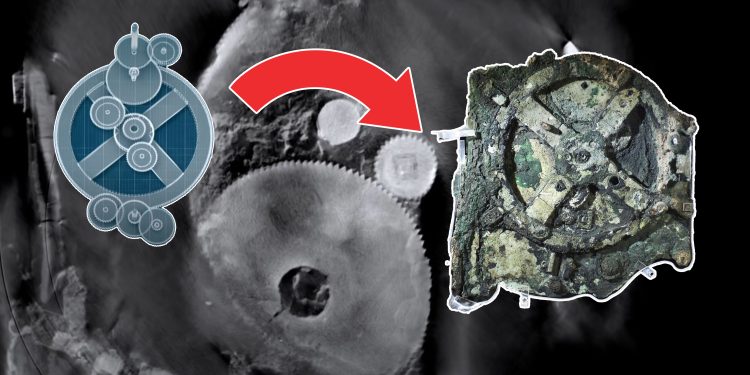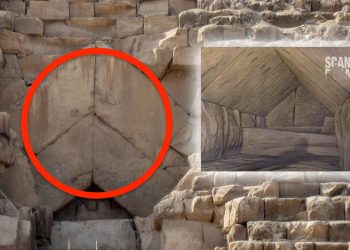How the Antikythera Mechanism Predicted Eclipses and Planetary Movements Over 2000 Years Ago
When a team of divers pulled a strange lump of bronze from a Roman shipwreck in 1901, no one had any idea what they had just found. It took over a century—and cutting-edge imaging technology—to finally reveal the truth: the artifact was a 2,000-year-old mechanical computer that could predict eclipses, lunar cycles, and the positions of the planets.
Known today as the Antikythera Mechanism, this astonishing device is one of the most advanced pieces of technology from the ancient world—and it’s still baffling scientists to this day.
The story begins off the coast of Antikythera, a small Greek island where sponge divers accidentally found the remains of an ancient Roman cargo ship. Among the statues, pottery, and other treasures was a corroded piece of bronze—overlooked at first, because it looked like nothing more than scrap.
Years later, experts realized they were looking at a mechanical instrument—now known as the Antikythera Mechanism—that had no equal in the ancient world.
How the Antikythera Mechanism Functioned as an Ancient Computer
The Antikythera Mechanism was far more than a timekeeping device. It featured over 30 interlocking gears, calibrated to model astronomical cycles with astonishing precision.
This ancient Greek machine could:
-
Predict solar and lunar eclipses
-
Model the Metonic cycle (19 years)
-
Account for the Callippic cycle (76 years)
-
Forecast eclipses using the Saros cycle (223 lunar months)
-
Track the phases of the Moon
-
Possibly even show planetary movements
For centuries, no other device on Earth matched its astronomical functionality.
Scientific analysis dates the mechanism to somewhere between 150 and 100 BCE. The precision of its gearwork rivals 18th-century clockmaking, even though it predates that era by nearly two millennia.
The Antikythera Mechanism proves that ancient Greek artisans had access to a level of mechanical miniaturization and astronomical understanding far ahead of their time.
In 2005, the Antikythera Mechanism Research Project (AMRP) began using modern tools like X-ray tomography and 3D scanning to analyze the device.
This revealed intricate gear trains, dials, and even tiny engraved Greek inscriptions—essentially a user manual etched into the bronze. For the first time, researchers were able to reconstruct how the mechanism worked and what it displayed.
Inscriptions Reveal How the Antikythera Mechanism Tracked Celestial Cycles
Among the text inscribed on the casing are references to:
-
“76 years” – the Callippic cycle
-
“19 years” – the Metonic cycle
-
“223” – the Saros eclipse cycle
These inscriptions showed that ancient astronomers understood the repetition of celestial events and embedded that knowledge into physical machinery.
Researchers believe the inscriptions served as an instructional guide, etched into the back panel of the device.
Who Built the Antikythera Mechanism? Theories and Debates
Some scholars believe the device may have been designed by or under the influence of Hipparchus, the Greek astronomer credited with inventing trigonometry and cataloging over 800 stars.
Others point to Archimedes or his students as possible contributors. Regardless of its creator, the Antikythera Mechanism demonstrates the depth of scientific knowledge in the Hellenistic world—knowledge that was almost completely forgotten.
Why the Antikythera Mechanism Was Centuries Ahead of Its Time
After the fall of the Roman Empire, the knowledge and craftsmanship required to build such a machine vanished. It would take over 1,000 years for anything similar to appear in Europe during the medieval period.
This lost legacy highlights how ancient advancements can disappear—and how rediscovering them reshapes our understanding of history.
While the Antikythera Mechanism is the most complete example ever found, some researchers believe similar devices may have existed in ancient Greek or Roman workshops.
Explorations continue near Antikythera and in other Mediterranean shipwrecks, where additional fragments—or entirely new mechanisms—might still be waiting to be uncovered.
Modern Replicas Show How the Antikythera Mechanism Really Worked
Using ancient techniques and modern modeling, researchers have successfully built working replicas of the Antikythera Mechanism.
These models demonstrate how gears were turned to calculate future eclipses, alignments, and even Olympic dates. They offer a window into how ancient people interacted with celestial time in mechanical form.
The Antikythera Mechanism has influenced scientists, engineers, and historians across disciplines. This 2,000-year-old machine proves that our ancestors reached incredible heights of knowledge, only for that brilliance to fade—until we were ready to rediscover it.
PLEASE READ: Have something to add? Visit Curiosmos on Facebook. Join the discussion in our mobile Telegram group. Also, follow us on Google News. Interesting in history, mysteries, and more? Visit Ancient Library’s Telegram group and become part of an exclusive group.











